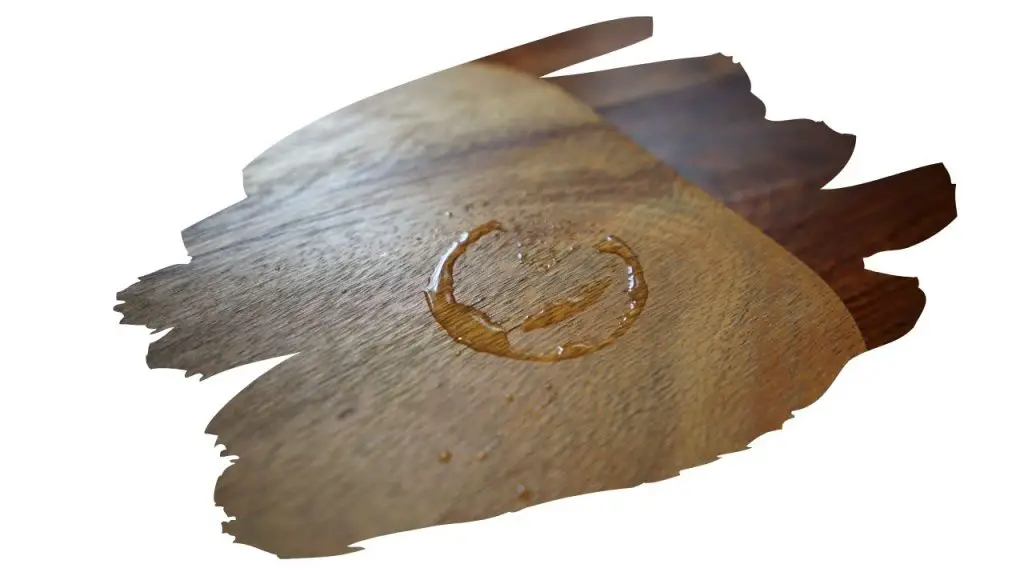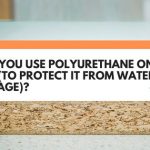Have you ever wondered why water rings form on wood finishes?
Well it all boils down to moisture in the form of steam or condensation. You set a cold beer bottle on top a nicely finished table top, and the watery condensation from it is going to get into the finish.
Same thing happens when you place a hot mug of coffee on the table too. The humid steam from the cup allows moisture to penetrate the finish underneath. And next thing you know, you have an unsightly ring marring the surface.
But, isn’t a polyurethane sealer supposed to keep out water and protect wood from getting wet? Well, while this durable finish can hold water mostly at bay, it is not wholly one hundred percent waterproof.
So, will polyurethane ever be enough to prevent water rings?
If you apply enough coats of polyurethane, then you can greatly reduce the chance of water rings damaging your wood finish. As a rule of thumb, polyurethane only requires 2-3 coats to protect wood. However, if you apply more coats (at least 4-6 coats or more), every additional coat will add an extra layer of protection from possible water damage.
Basically, more coats means more layers for water to try and get through. But, is there anything more you can do?…

This post may contain affiliate links to products that we receive a commission for (at no additional cost to you). Learn more here.
How Do I Keep Water Rings Off My Wood Table?
The two best things you can do to prevent water rings is to use a finish and coasters.
Finishing Sealers
If you want to prevent water damage then you will need to apply a highly water-resistant finish to wood. Sealers such as Polyurethane, Varnish and Lacquer are all good choices for this. However, polyurethane is the most durable of the three.
Related Post: What Is The Difference Between Lacquer and Polyurethane?
Coasters At All Times
Following that, the next thing you can do is to simply use coasters. Whether it is a hot or a cold drink, in a cup or a can, always place a coaster down first.
Related Post: What Is The Best Finish For A Walnut Table? (Solved!)
How Do You Prevent Ring Marks?
If you want to prevent ring marks then you need to apply a hard-wearing sealer (like polyurethane) as your wood finish. And you need to apply plenty of it too.
Now, here’s the kicker, more than 2-3 standard coats of polyurethane won’t hurt your finish. But that doesn’t mean it adds more water protection.
Rather, all it adds is more time when it comes to applying polyurethane to wood. Especially as you have a long wait for each coat to dry before applying the next layer.
However, what each extra coat will do is make it harder for water to seep into the wood below.
When water gets into a poly finish alone, you end up with a white discoloration. But if it gets into the wooden surface underneath that, then it stains and darkens the wood.
You can buff out a white ring mark pretty easily. But, if the wood stains under it, then you are going to have a much tougher job on your hands trying to fix that water damaged wood.
Does Polyurethane Protect Wood From Water?
Yes it does. However, think of it more as being incredibly water-repellent, rather than being completely waterproof.
With enough humidity and/or condensation, moisture can still manage to make its way past that sealant.
How Long Will Polyurethane Last? Both a water based and oil based polyurethane finish can last over 10 years without needing a touch up.
Related Post: Polyurethane Not Drying? What You Can Do To Fix It
So To Sum Up…
Polyurethane can repel water incredibly well, but it is still susceptible to water ring damage – just like most finishes.
However, extra layers of a poly finish will make it harder for condensation to get into it. And those extra layers also make it more difficult for water to seep into the wood too.
So, if you want to prevent water rings, apply 4-6 coats of polyurethane for that increased level of moisture resistance.
References
Polyurethane Finishing System for General Aviation (sae.org)



